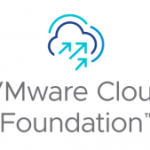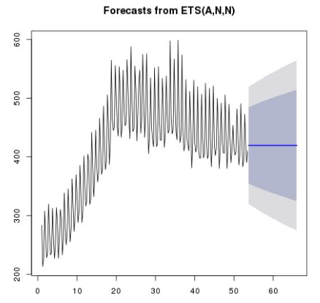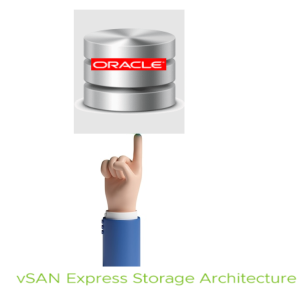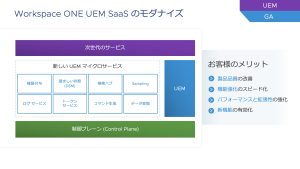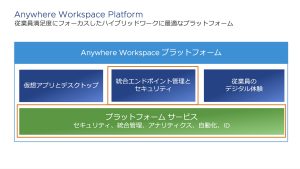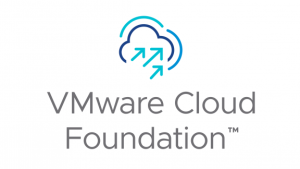
Overview
The VCF Async Patch tool can be used to patch individual BOM products on vSAN Ready Nodes and VxRail environments. The BOM products that can be individually async patched include:
VCF on vSAN Ready Nodes: VC, NSX, ESXi
VCF on VxRail: VC, NSX, ESXi/VxRail composite bundle
The Async Patch Tool is supported with VMware Cloud Foundation 4.2.1 and later
Future VCF upgrade version: VCF releases that are patched with async patches of BOM products can be upgraded to future VCF releases as stated in https://kb.vmware.com/s/article/88287
Operating System: Supported with Linux (includes Cygwin support) and Windows (includes WSL support) environment
Flowchart

Commands
Remove Older version of the tool and configure TCP keepalives
How do I remove older version of the tool?
user: vcf
Remove older version of tool
$ rm -r /home/vcf/asyncPatchTool (default directory)
Additional options |
How do I configure keepalives?
User: vcf
Configure Keepalives
Modify properties to below:$ vim ~/.ssh/config TCPKeepAlive yes ServerAliveInterval 30 |
Download Async Patch Tool
Offline – Needs a DMZ machine which can connect to depot.vmware.com. Use linux machine
How do I download async patch tool
| 1. Log into VMware customer connect and select your current version of VCF 2. Click “Drivers & Tools” 3. Expand VMware Cloud Foundation Tools and click Go To Downloads in the Async Patch Tool row and download the tool Refer commands below for: |
How do I install the tool on the DMZ server?
OFFLINE – Install tool on DMZ machine
User: <DMZ user>
Extract Patch
$ mkdir ${APTool_Install_Directory}/asyncPatchTool
Set the permissions for the asyncPatchTool directory |
Demo
List Patches – Offline mode
How do I list patches available for async patching in the Async Patch Tool?
user: <DMZ user>
List Patches
$ cd /{APTool_Install_Directory}/asyncPatchTool/bin$ ./vcf-async-patch-tool --listAsyncPatch --depotUser ${DEPOT_USER}
Additional options – Examples Post Input |
What does it output?
The tool will list a table of async patches and their details to the console in human-readable format:
List Option

Demo
Copy Async Patch Tool to SDDC Manager- Offline Mode
user: vcf (SSH to SDDC manager FQDN)
| Copy the entire contents of the Async Patch Tool directory from the computer with internet access to the /home/vcf/asyncPatchTool directory on the SDDC Manager appliance
Set the permissions for the asyncPatchTool directory |
Demo
Download async BOM patch – DMZ Offline mode
user: DMZ user
Download Patch
$ cd /{APTool_Install_Directory}/asyncPatchTool/bin
VSRN VxRail
Post Input |
Demo
Copy Patch to SDDC manager – Offline mode
user: vcf
| Copy the entire output directory (specified in above download command, for example: apToolBundles) to the SDDC Manager appliance. You can select any location that has enough free space available, for example, /nfs/vmware/vcf/nfs-mount/.)
Set permissions SSH in to the SDDC Manager appliance using the vcf user account Navigate to /nfs/vmware/vcf/nfs-mount (If you copied the output directory to a different location, navigate to that directory instead) Run the following commands: |
Demo
Enable Patch – Offline mode
user: vcf
$ cd /home/vcf/asyncPatchTool/bin
VSRN VxRail
Post Input |
Demo
Log in to the SDDC Manager UI and apply the async patch to all workload domains.
The patches that were enabled show up in the SDDC Manager. This should be run as a regular upgrade from the SDDC Manager.
Disable all Patches – Offline
user: vcf
SSH in to the SDDC Manager appliance using the vcf user accountNavigate to /home/vcf/asyncPatchTool/bin
Run the following command: Post Input |
Demo
Download Future Bundles for Enable Upgrade – DMZ Offline Mode
user: DMZ user
Download Future Upgrade Bundles
$ cd /{APTool_Install_Directory}/asyncPatchTool/bin
VSRN VxRail
Post Input |
Demo
Standalone commands
Help
Lists the different types of options supported by the tool
${AP_TOOL_DIR}/bin/vcf-async-patch-tool -h
Inventory Sync
This operation updates the VCF inventory of NSX-T, ESXi and VC with the accurate information of the versions run by the actual products, keeping the record that the VCF instance is up-to-date. This option should be exercised by the customers when the customers have done any out of band upgrades
${AP_TOOL_DIR}/bin/vcf-async-patch-tool –performInventorySync –sddcSSOUser
${SDDC_SSO_USER} –sddcSSHUser ${SDDC_SSH_USER}
Demo
Post-check
This option can be used to verify if the patch enablement has been completed successfully or failed. It internally will ensure that all the requested patches have been uploaded to LCM and are showing as available for upgrade.
${AP_TOOL_DIR}/bin/vcf-async-patch-tool –enableAsyncPatch –postcheck –patch
${PRODUCT_TYPE}:${PRODUCT_VERSION} –sddcSSOUser ${SDDC_SSO_USER} –sddcSSHUser
${SDDC_SSH_USER} –instanceType ${INSTANCE_TYPE} [ONLINE/OFFLINE]
Additional options
–depotUser ${DEPOT_USER}: Required to be specified for online SDDC-M environments
–pdu ${PARTNER_DEPOT_USER}: Required to be specified for for online Vxrail SDDC-M environments
–outputDirectory ${OUTPUT_DIRECTORY}: Required to be specified for for offline SDDC-M environments. This should be the location of transferred artefacts from DM-Z machine to SDDC-M. This is optional arg for online SDDC-M environments
Pre-check
Validate system environment is able to perform enable patch.
${AP_TOOL_DIR}/bin/vcf-async-patch-tool –enableAsyncPatch –precheck –patch
${PRODUCT_TYPE}:${PRODUCT_VERSION} –sddcSSOUser ${SDDC_SSO_USER} –sddcSSHUser
${SDDC_SSH_USER} –instanceType ${INSTANCE_TYPE} [ONLINE/OFFLINE]
Additional options
–depotUser ${DEPOT_USER}: Required to be specified for online SDDC-M environments
–pdu ${PARTNER_DEPOT_USER}: Required to be specified for for online Vxrail SDDC-M environments
–outputDirectory ${OUTPUT_DIRECTORY}: Required to be specified for for offline SDDC-M environments. This should be the location of transferred artefacts from DM-Z machine to SDDC-M. This is optional arg for online SDDC-M environments
–productType, –ptype <String>: Product type, ESX_HOST,NSX_T_MANAGER, VCENTER listAsyncPatch in order to filter the list by product type.
–proxyServer, –ps <String>: Used when internet connectivity is only available through a proxy server. Provide proxy server addressand port in ‘<FQDN:port>’ format.
To Note:
–depotPassword <String> MyVMware login password. Should be specified in quotes if any special characters are included
–depotUser, –du <String> MyVMware login user name. Should be specified in quotes if any special characters are included
The download operation of enable patch downloads additional SDDC Hot Patch bundles. These bundles may be required to patch your SDDC to successfully apply the async patch on your environment.
Troubleshooting
Log Location
Log for the Async patch tool is async_patch_tool.log. Tail -f to see log details. The tool prints the INFO or above level logs to the console. The tool prints the current location of the log file when the process is running, copies over the log files to /var/log/vmware/vcf/lcm/tools/asyncpatchtool directory once the tool finishes the execution to allow SoS collection
Disabling All Patches Ends Unexpectedly with Failure Waiting for LCM Service to come up
The script used to clean up bundles in the disable patch workflow intermittently gets stuck and exits out.
In this scenario, there is a chance that LCM was never restarted if the script exited unexpectedly.
If this occurs, ensure the LCM service is up and running correctly and retry AP Tool operation
Enable Future Upgrade on VxRail fails with Exception
partnerBundleMetadata.json file does not exist at location /nfs/vmware/vcf/nfs-mount/bundle/depot/localsoftwareCompatibilitySets.json file does not exist at location /nfs/vmware/vcf/nfs-mount/bundle/depot/local |
Make sure the partnerBundleMetadata.json and softwareCompatibilitySets.json are correctly placed in /nfs/vmware/vcf/nfs-mount/bundle/depot/local
Make sure a permission of 755 on the above location , for the vcf_lcm user
Invalid Permissions Issue
If the output directory was copied over to the sddc VM without setting proper ownership/permissions, the tool will fail when uploading bundles with error similar to:
2022-04-27 14:12:12.147 [ERROR] Unexpected error occurred uploading bundle {"status":500,"code":"Internal Server Error","message":"INSUFFICIENT_BUNDLE_DELETE_PERMISSIONS; /nfs/vmware/vcf/nfs-mount/apToolBundles/manifests/bundle-47505.manifest file can not be deleted due to insufficient permissions. vcf_lcm user must have read and write access to /nfs/vmware/vcf/nfs-mount/apToolBundles/manifests directory or upload bundle files from any directory where vcf_lcm user have read and write access."} |
Unwanted bundles are enabled on environment and cleanup has to be performed
If the patches enabled using AP tool are required to be cleaned up, please login your SDDC VM as root user and run disable all patches command:
Error Message
vcf@sddc-manager [ ~ ]# {asyncPatchTool}/bin/vcf-async-patch-tool --disableAllPatches --ssou {ssoUsername} |
Account locked issue
The tool uses root credentials for performing the operations such as config property update, etc as required for the operations.
If there are multiple attempts with either blank or invalid password, the user account is locked on SDDC VM. Follow the steps below to reset the number of failed logins by the root user.
Reset failed root login attempts
1. Login as root into the vCenter shell.2. Execute - pam_tally2 --user=root --reset |
Invalid Permissions Issue
To fix the error, ensure that the output directory has proper vcf:vcf 755 permissions:
vcf@sddc-manager [ ~ ]# chmod -R 755 {apToolBundlesDir}vcf@sddc-manager [ ~ ]# chown -R vcf:vcf {apToolBundlesDir} |
Links
Documentation: https://docs.vmware.com/en/VMware-Cloud-Foundation/services/ap-tool/GUID-49818DF1-94EA-4C85-8CB6-6EFFCE5F8060.html
Patch Support : https://kb.vmware.com/s/article/88287
The post VMware Cloud Foundation 4.x – Async Patching of NSX, VC, ESXi – Offline/air-gapped customers appeared first on VMware Cloud Foundation (VCF) Blog.
